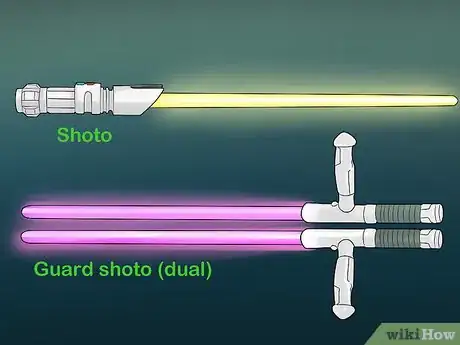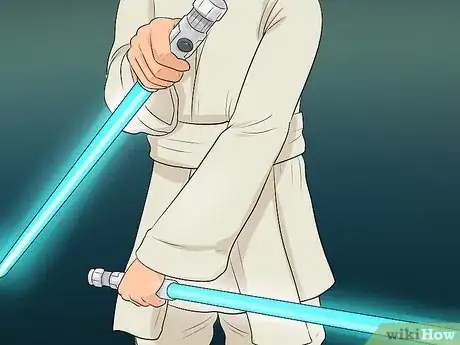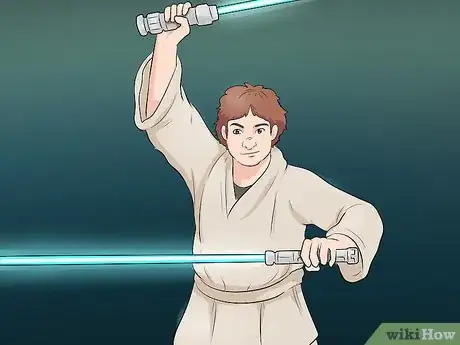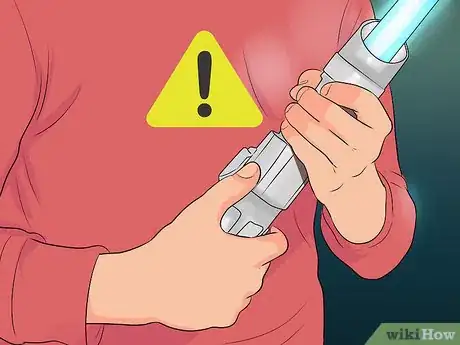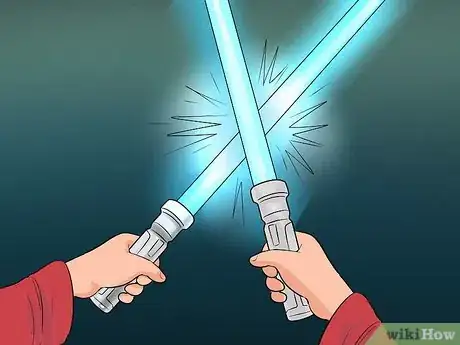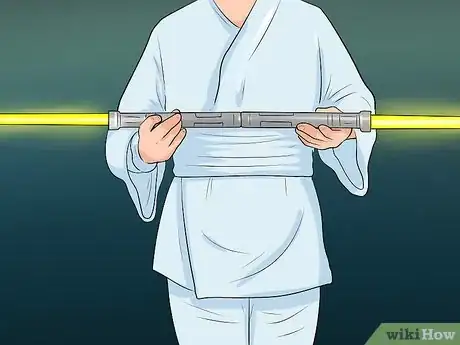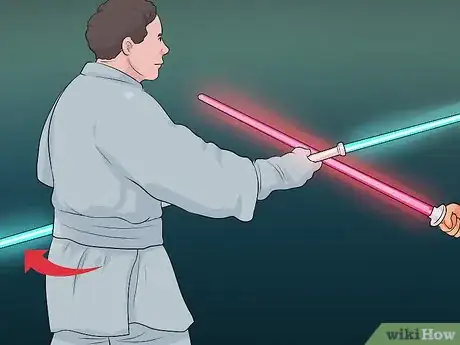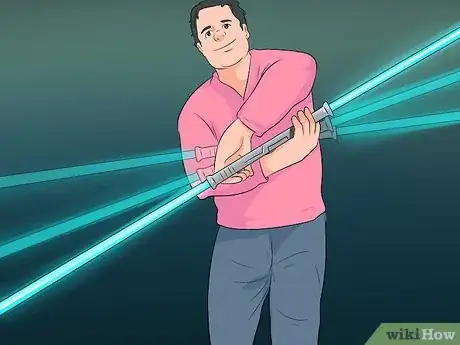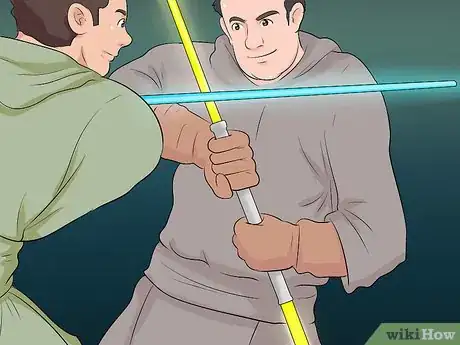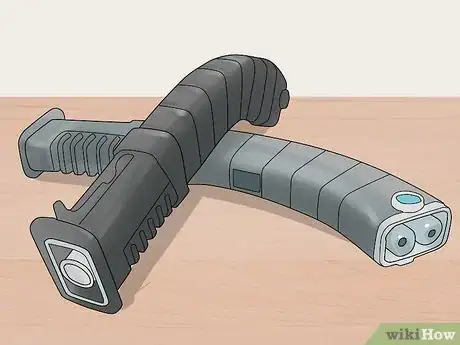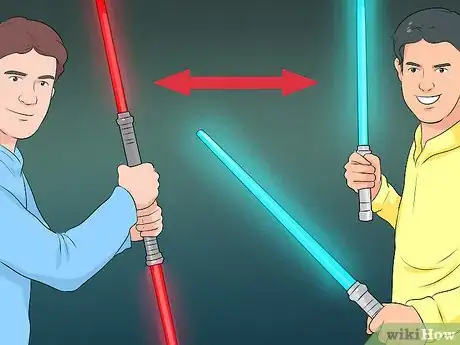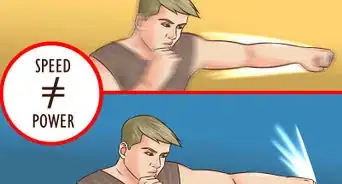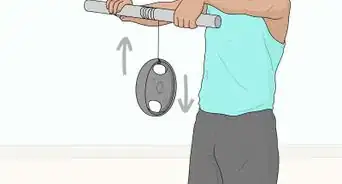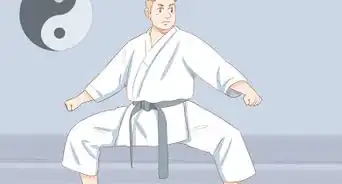X
wikiHow is a “wiki,” similar to Wikipedia, which means that many of our articles are co-written by multiple authors. To create this article, volunteer authors worked to edit and improve it over time.
This article has been viewed 23,454 times.
Learn more...
Jar'kai is more of a technique or a tactic than a true lightsaber form. It revolves around the idea of using more than one lightsaber in combat.
Steps
Method 1
Method 1 of 3:
Dual blades
-
1Choose your blades. Most Jedi prefer to wield a shoto - a short (~60cm blade) lightsaber - in their off hand, as it is easier to maneuvre. You can wield two shotos or two full-length lightsabers if you prefer. Some Jedi used a guard shoto - a shoto with a handle coming out of the side, like a police baton.
-
2Choose your grip. You can wield both blades with either a standard or a reverse grip, or do one of each. As the shoto is easier to maneuvre, if you have one, I would recommend using it for the reversed grip.Advertisement
-
3Practise the basic forms. Ataru and Niman are particularly suited for dual blades, but they can also be applied to the other forms. Start slowly so that you don't stab yourself with your own lightsabers, then build up speed when you're more confident.
-
4Don't become reliant on your second blade! If you lose your second blade, you'll be in big trouble. Practise with only one blade at least as much as you practise with both.
-
5Understand the limitations of dual blades. If you use dual blades, you cannot use a two-handed grip. This means that your blocks and attacks will be weaker than usual. If you're inside, dual blades are harder to maneuver within the confines of the walls.
-
6Don't hit your lightsabers together! One of the worst things you can do in Jar'kai is accidentally block your own attack with your second blade.
Advertisement
Method 2
Method 2 of 3:
Saberstaff
-
1Practise, practise, practise. Saberstaffs are harder to master than dual blades. Most of the moves of the main forms you will have to adapt, or you'll end up slicing yourself in half with your second blade. Take up quarterstaff training to help.
-
2Don't focus on both blades. This is a mistake that many people make. With a saberstaff, the blades form a straight line. Therefore, if you know the location of one of the blades, you should be able to infer the position of the other.
-
3Understand that a saberstaff is no better than a regular lightsaber. In fact, a regular lightsaber may be better. If you're attacking somebody in front of you with a saberstaff, the second blade is pointing behind you, so you can't attack with two blades at once. Saberstaffs are far more unwieldy indoors than a regular lightsaber. Most of their value comes from the fact that, as they are very rare, it can be quite shocking to suddenly find yourself facing one.
-
4Practise spinning your saberstaff with both hands. Because a saberstaff is longer and heavier than a regular lightsaber, it has a higher "moment of inertia". Basically, you have to apply more force to make it spin at the same speed. Use both hands at the centre of the handle.
-
5Although you can't attack with both blades at once, you can defend with both. Saberstaffs are much better than regular sabers for defence, as there is more blade to defend with. Try practising Soresu or Niman as one of your main forms.
Advertisement
Method 3
Method 3 of 3:
Paired blades
-
1Understand what is meant by paired blades. Paired blades are like the ones Asajj Ventress wields: dual blades that can be attatched and detached to form a saberstaff.
-
2Practise with just one lightsaber. Use the main forms. This is important because, if you detach your lightsabers, and then lose one, you only have one blade left.
-
3Practise with your sabers in both dual blade and saberstaff modes. Learn which is best for each situation.
-
4Learn when to change modes. If you change modes partway through a battle, it can surprise your opponent. This can work out to your advantage.
Advertisement
About This Article
Advertisement
